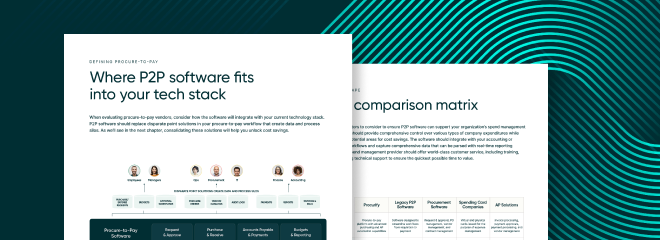
Chart of Accounts: What Is It and How Does It Work?
Accounting mistakes cost a lot of money – as much as $1.2 billion in the case of Atos. To avoid such situations, businesses need to keep their records right and company accounts organized. This is easier said than done as recording every transaction takes time and effort.
To avoid mistakes, businesses use a chart of accounts – a list of records for each type of asset, liability, equity, revenue, and expense, which are organized into a variety of specific accounts.
If you’ve never created a chart of accounts or have never heard of one, you are in the right place. In this article, you will learn:
- What a chart of accounts is
- The importance of a chart of accounts
- What to include when making one
What is a chart of accounts?
A chart of accounts is a list of all the financial accounts in the general ledger of a company. It gives you an overview of all the categories of financial transactions a company conducted during a specific accounting period.
Businesses generally use a number system to organize transactions into categories. Here’s a simple example:
Assets
- 101: Cash
- 108: Petty cash
- 120: Marketable securities
- 141:104: Accounts receivable
- 159:Allowance on doubtful accounts
- 162:Prepaid expenses
- 179:Inventory
- 198:Fixed assets
Liabilities
- 203: Accounts payable
- 238: Accrued liabilities
- 247: Taxes payable
- 252: Wages payable
- 270: Notes payable
Stockholders’ equity
- 304: Common stock
- 350: Preferred stock
- 364: Retained earnings
Revenue
- 381: Sales revenue
- 412: Services revenue
Expenses
- 440: Cost of goods sold
- 445: Bank fees
- 460: Depreciation expense
- 465: Payroll tax expense
- 478: Supplies expense
- 490: Utilities expense
- 495: Wages expense
How you number your chart of accounts will vary based on your business. For example, a three-code (XXX) might suffice for a small business. But a larger business with several divisions might need a more complex code (XX-XX-XXX).
Why is a chart of accounts important?
A chart of accounts is a crucial part of your company’s bookkeeping system. It helps you keep track of the cash flow in your business. It helps you simplify your accounting and easily retrieve and present important financial information.
Categorizes all accounts
A chart of accounts consolidates your business’ assets, liabilities, equities, revenue and expenses in a single location. Having a single source of truth makes it easier to record transactions and keep them up to date. Without an organized record keeping system you risk having missing records and inaccurate figures, filing taxes wrongly and losing money to unpaid invoices.
Helps you make informed business decisions
You need the right information to make strategic financial decisions. Without a chart of accounts, you might find it difficult to carry out essential tasks like budgeting.
Say you want to determine your asset coverage ratio before acquiring a long term loan for your business. A quick glance at an accurate chart of accounts can tell you if you can pay off your debts with your current assets or if you need to hold off on taking on more financial risk.
Track fraudulent activities
The UK is losing more than £137 billion to fraud each year. While these figures are alarming, the good news is that fraud is preventable.
One of the ways to protect your business is to keep an organized and updated chart of accounts. It provides a clear record that helps you spot discrepancies and take action before it is too late.
Provides insights into your business’s financial health
An accurate chart of accounts helps you keep a finger on the pulse of your business. It helps you know if your finances are in top shape or if your business is flatlining.
What are the accounts listed in a chart of accounts?
A chart of accounts is usually divided into two subcategories —balance income sheet and income statement. These subcategories are split into five types of accounts–liabilities, assets, equities, revenue, and expenses.
Balance sheet accounts
Balance sheet accounts are financial statements that record and categorize transactions such as assets, liabilities, and shareholders’ equity at a specific point in time.
It provides an overview of what your business owns (assets), owes (liabilities) and what the business owes its owners (equity). At the close of an accounting year, the balances in these accounts will be reported on the company’s end of year balance sheet.
Assets
An asset is a probable future economic benefit owned or controlled by a particular entity as a result of past transactions or events.
Examples are cash, prepaid expenses, inventory and fixed assets.
Liabilities
This section of the balance sheet lists out all of your business’ liabilities. Liabilities are financial obligations to transfer economic benefits (assets or services) to another entity that a company will possibly fulfill in the future.
Shareholders’ equity
Shareholder’s equity section of the balance sheet reflects the residual value of your business’ assets after deducting all its liabilities. It includes the retained earnings and the shareholders’ investments to own shares in the business.
Examples are additional paid-in capital, common shares, preferred shares, and treasured stock.
Income statement accounts
An income statement account summarizes the revenue and expenses of a business over time. The accounts in the income statement usually follow the balance of sheet accounts in a chart of accounts or a general ledger.
To track the flow of revenues and expenses a larger organization may keep many income statement accounts.
Revenue
This is the income realized from the sales of goods and services. This includes the sale of goods or services on credit. The recorded value is on the balance sheet is accounts receivable.
Examples include sales revenue.
Expenses
Expenses are the costs incurred by a business in the process of generating revenue.
There are fixed costs which remain the same when the volume of units of production increases. On the other hand, variable costs change when the volume of units produced increases or decreases.
Examples are general and administrative expenses like travel expenses, rent, insurance and employee salaries.
Now you might be wondering do accounts payable go on an income statement?
No. It is a common error to mistake Accounts payable (AP) for business expenses but they do not appear under the income statement. APs are records of short term debts or financial obligations listed on the balance sheet accounts as liabilities. When these debts are paid the expense shows on the income statement.
How do you adjust your chart of accounts
As your business grows, you might need to make changes to your chart of accounts. You might want to add a new account because you just started recording purchase orders or sales credits memos. Or you might want to delete an account because it is no longer in use.
You can add an account to your charts of accounts at any time of the year without it negatively affecting the accuracy of your records. But it is best to hold off on deleting accounts till the end of the year to avoid skewing your figures.
An intuitive spend management software like Procurify allows you to delete accounts with a single click or hide them from view
Automate your record keeping
Not so long ago, many finance teams would use spreadsheets to keep their chart of accounts. Fortunately, those days are all but behind us and many teams are turning to accounting software to automate this process.
With a spend management tool like Procurify, you can set up your chart of accounts minutes. Not only that, Procurfy integrates with your accounting system to streamline your chart of accounts. Using the Procurify QuickBooks integration you can reduce hours of data entry, easily match invoices to purchase orders and pay invoices while keeping track of important transactions from your dashboard.
Ready to manage your records better? Watch a demo today!
